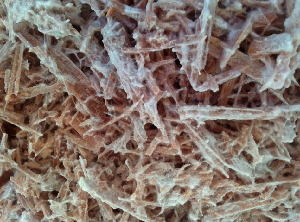
This genome was sequenced as part of the JGI Community Sequencing Program “Survey of the lignocellulolytic capabilities over the order Polyporales”. Within Agaricomycotina, the order Polyporales is the major group of wood decayers in temperate and tropical forests. As such, Polyporales have a pivotal role in the global carbon cycle. Lignocellulosic biomass is the most important carbon storage on the emerged land, and provides a renewable resource for the production of biofuels and chemicals, including value added chemicals. Polyporales are able to deconstruct the three main polymers of lignocellulose; cellulose, hemicellulose and lignin. In particular, white-rot fungi are able to totally degrade highly recalcitrant lignin polymers through the production of extracellular enzymes including laccases, lignin peroxidases, manganese peroxidases and versatile peroxidases. As a consequence, white-rot fungi have a high potential for biorefineries using raw lignocellulosic feedstock from different origins (dedicated crops, agricultural wastes, silviculture, etc.) that do not compete with food production or agricultural land.
Polyporus Fr. is the type genus of family Polyporaceae. Most species of this cosmopolitan genus cause white rot on dead wood of various tree genera, but some species grow on other substrates such as grass roots or bamboo roots (Sotome et al., Mycologia, 2008). In 1979 Vaulina et al. used Polyporus brumalis to test the effect of space flight factors and weightlessness on fungal fruiting body formation. More recently, it was shown that the ability of P. brumalis to degrade lignin from pine tree wood chips involves manganese peroxidases and that degradation of dibutyl phthalate, a recalcitrant endocrine-disrupting chemical, involves laccases.
The genome sequencing for P. brumalis will allow exploration for novel biocatalysts and deepen our understanding on the functional diversity among Polyporales, i.e. enzymatic capabilities linked to lignocellulose degradation.
Genome Reference(s)
Miyauchi S, Rancon A, Drula E, Hage H, Chaduli D, Favel A, Grisel S, Henrissat B, Herpoël-Gimbert I, Ruiz-Dueñas FJ, Chevret D, Hainaut M, Lin J, Wang M, Pangilinan J, Lipzen A, Lesage-Meessen L, Navarro D, Riley R, Grigoriev IV, Zhou S, Raouche S, Rosso MN
Integrative visual omics of the white-rot fungus Polyporus brumalis exposes the biotechnological potential of its oxidative enzymes for delignifying raw plant biomass.
Biotechnol Biofuels. 2018;11():201. doi: 10.1186/s13068-018-1198-5
References
Vaulina EN, Palmbakh LR, Antipov VV, Anikeeva ID, Kostina LN,
Zharikova GG,
Kasatkina TB. Biological investigations on the orbital station
"Salyut-5". Life
Sci Space Res. 1979;17:241-6.
Sotome K, Hattori T, Ota Y, To-anun C, Salleh B, Kakishima M.
Phylogenetic
relationships of Polyporus and morphologically allied genera.
Mycologia. 2008
Jul-Aug;100(4):603-15.
